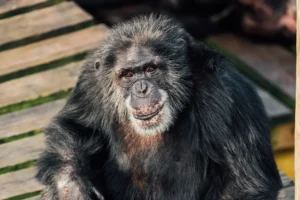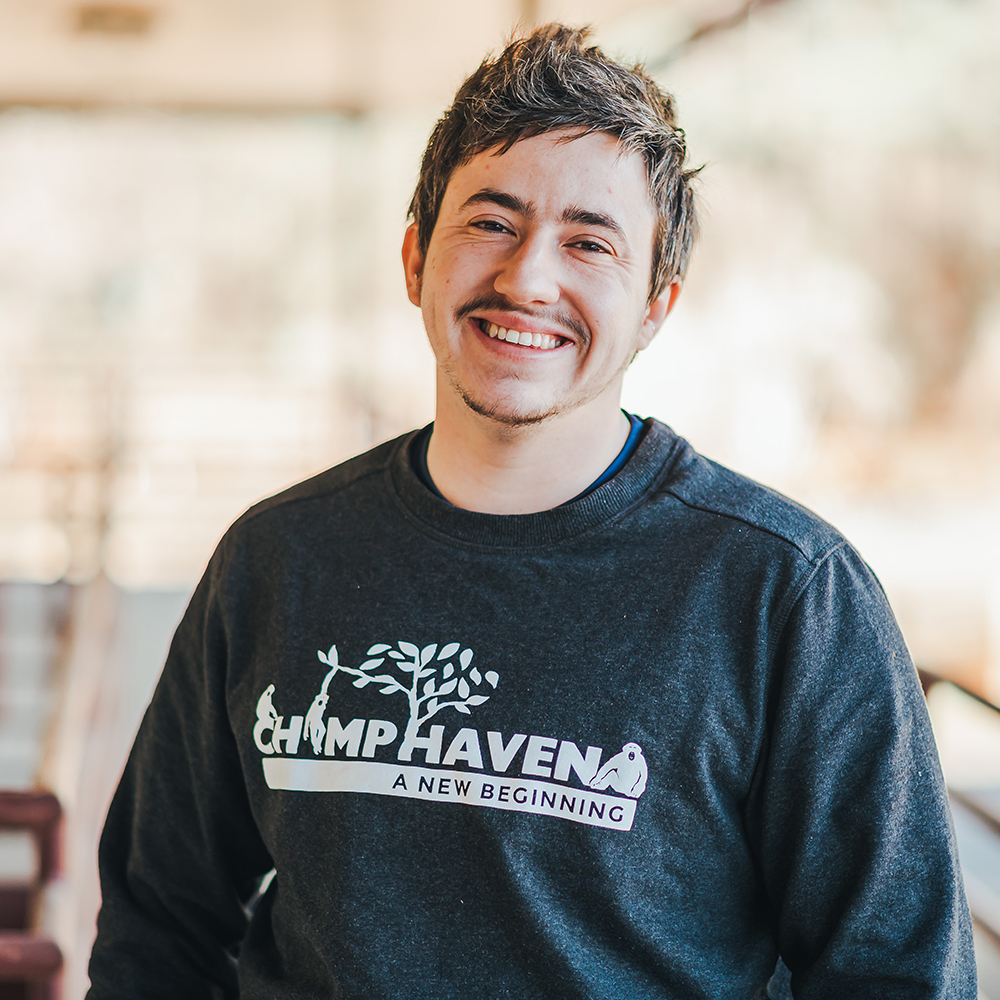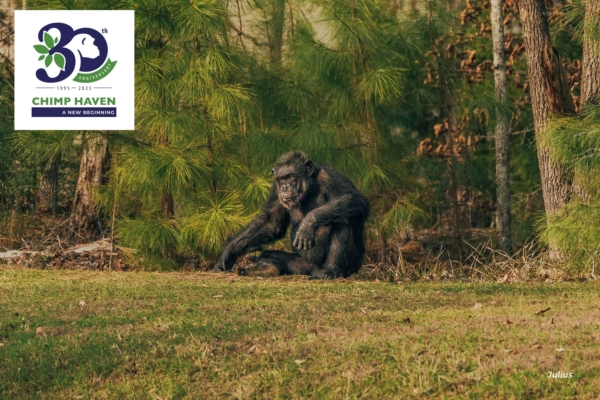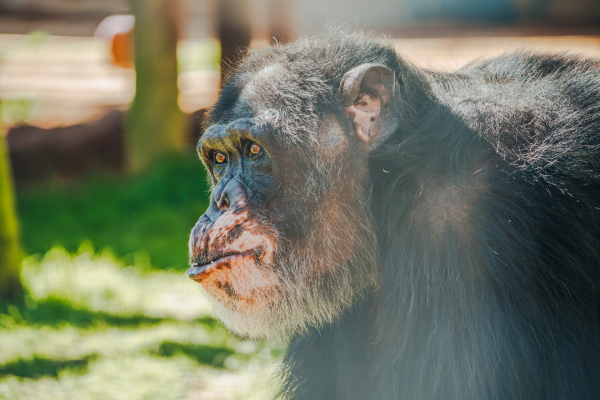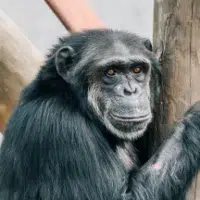
In Conversation with Bischk

Many years of both human and chimpanzee lives have been spent trying to establish a common form of communication, whether through sign language, lexigrams, or crude attempts at spoken words. While at Chimp Haven our goal is to allow the chimps to just be chimps, we still communicate in a sense through positive reinforcement training (PRT). PRT invites the chimps to learn behaviors which assist with their own care, like presenting a body part or their veterinary team to examine. From the outside it seems straightforward enough, teaching an animal to sit, give hand, foot, or ear when asked – at its heart you gain so much more than that.
Bischk is only 39 years old, but looks a few decades older than that, resembling the late great Maggie Smith in her role as Professor McGonagall. Her face is creased with wise wrinkles and dark brown eyes shine with clever intelligence, evaluating the world around her with unmitigated judgment. To stand in Bischk’s court is to be found guilty until proven innocent via covert handoff of dried fruit or popsicle. She is cunning and relishes mischief, stealing spoons and making people jump with a well-placed prod of her long fingers.
Her passion for causing trouble comes second to how much she loves to eat. With an enviable metabolism, she maintains a sleek frame no matter how much she eats, and her appetite is clearly communicated by her impatience when she sees food coming her way. Her demands are communicated via a charming lip smack unique only to her and an endearing pout, pushing her lips out at caregivers with her most convincing wet eyed plea, only to repay any generosity with a haughty jab of her fingers when you’re found empty handed.
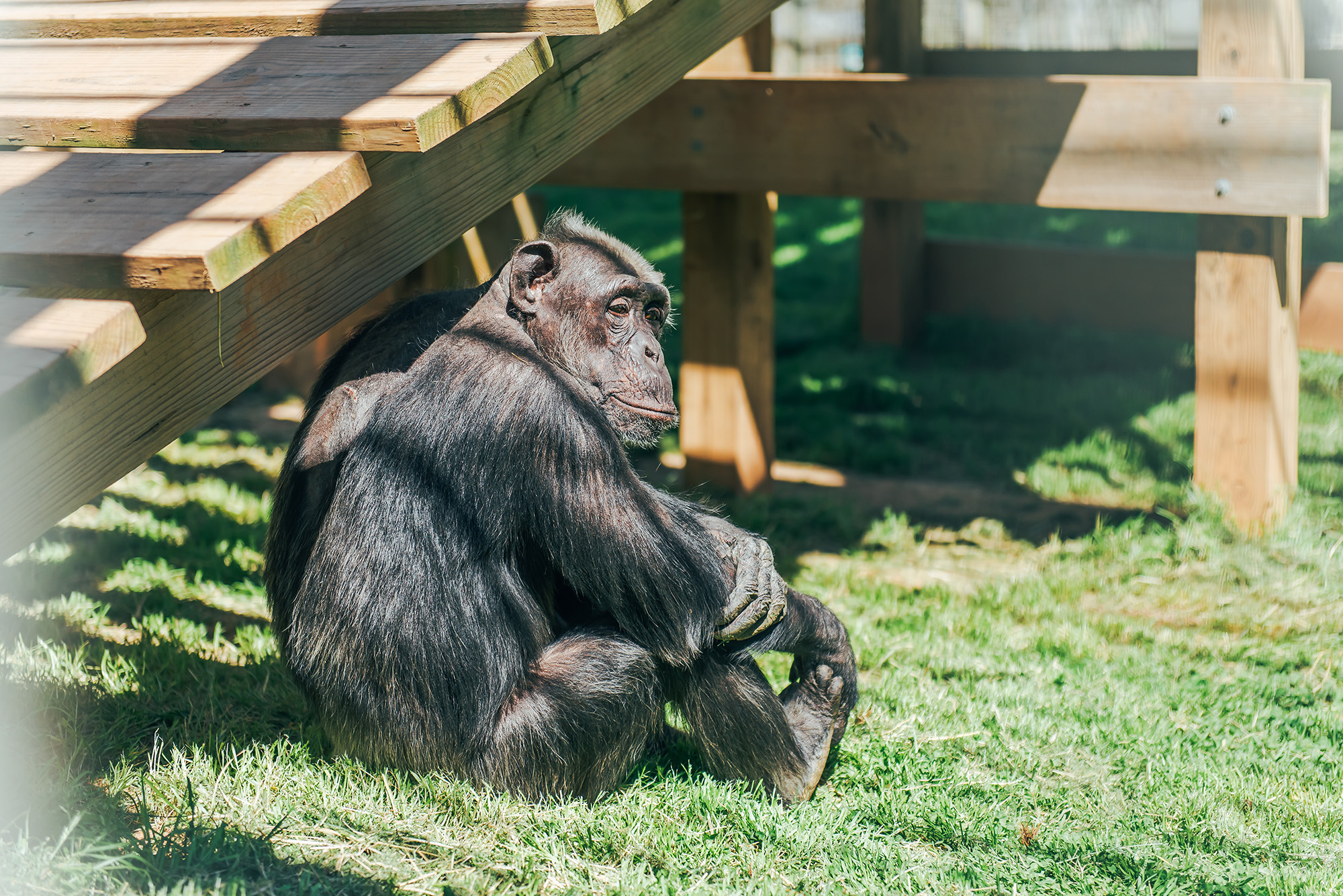
When Bischk and I started our training together, she was eager to show me everything she knew, a flurry of limbs as she offered to present everything at once as fast as she could manage it. She found it faster to just try and guess what was going to be asked next than wait for the hand signal. The result of her intelligence was frustration with me when I refused to reward her for trying to mind read rather than look at my signal.
We went through a painstaking period of training for focus and attention, a foundation based on studio animal training. The first thing a dog actor being trained to work in films is taught is to look not at the treat, but at the trainer. That focus is critical to catching the next cue that will indicate it’s time to bark, beg, or roll over and fulfill their role in the scene. Applied to Bischk, who was training for medical behaviors, this was to enhance her attention span and patience. Session after session Bischk was peppered with treats for eye contact and attention to the hand signals being given. She both enjoyed and loathed these moments as this was a new request she hadn’t faced. Focus is an incredibly abstract concept to develop in an animal, especially in a chimpanzee who has a vivid inner life and motivations.
Another hurdle was Bischk’s proclivity for petty theft. As the embodiment of the idle hands saying, she often found it much more fun to steal the cue stick pointing at her body parts. She had good reason, often these items can be held for ransom, bartering plastic spoons for a peanut. While this was indulged at first, she started to try and take it more often, so we transitioned to letting this be her method of ending the session. It only took two instances of packing up after losing the cue stick for her to quit that habit. One of the things that makes training with apes so remarkable is how easily they connect cause and effect. It represents what intensely complex, social animals they are to be able to infer that something they do can cause a reaction in someone else, even in another species.
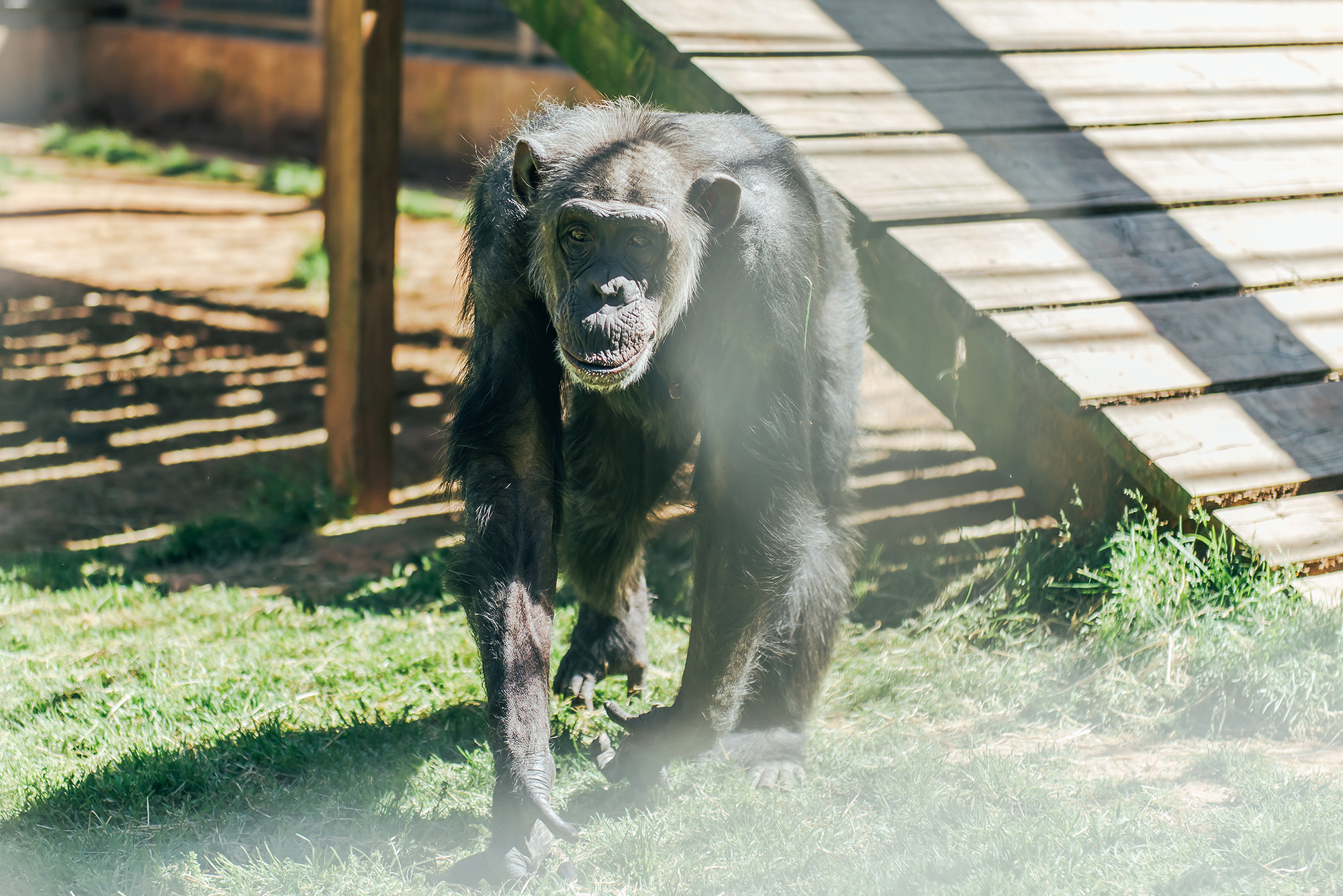
Without words we were able to come to an agreement that I would not work with her if she took the tools needed for a training session. And in turn, she told me clearly that she valued our sessions enough to set aside this hobby of hers (at least during training). It was a critical step to introducing the use of medical tools like thermometers and portable EKGs into her learning.
Today, Bischk is an entirely different trainee than when we started. She keeps her eyes on hand signals, looking to see what is being asked with immense patience. From a rough start at short, five-minute sessions, Bischk can now train almost indefinitely with ardent attention, as long as the food keeps flowing. Looking back at when this training relationship began with Bischk a year ago, it is impossible to imagine that she would ever have sat still long enough for a Kardia reading. Staying still is hard enough for people, it’s even more inspiring to see a chimpanzee do it, calmly seated with two fingers on the sensitive metal pads of the miniature EKG reader having her heartbeat monitored, without a word passing between us.



